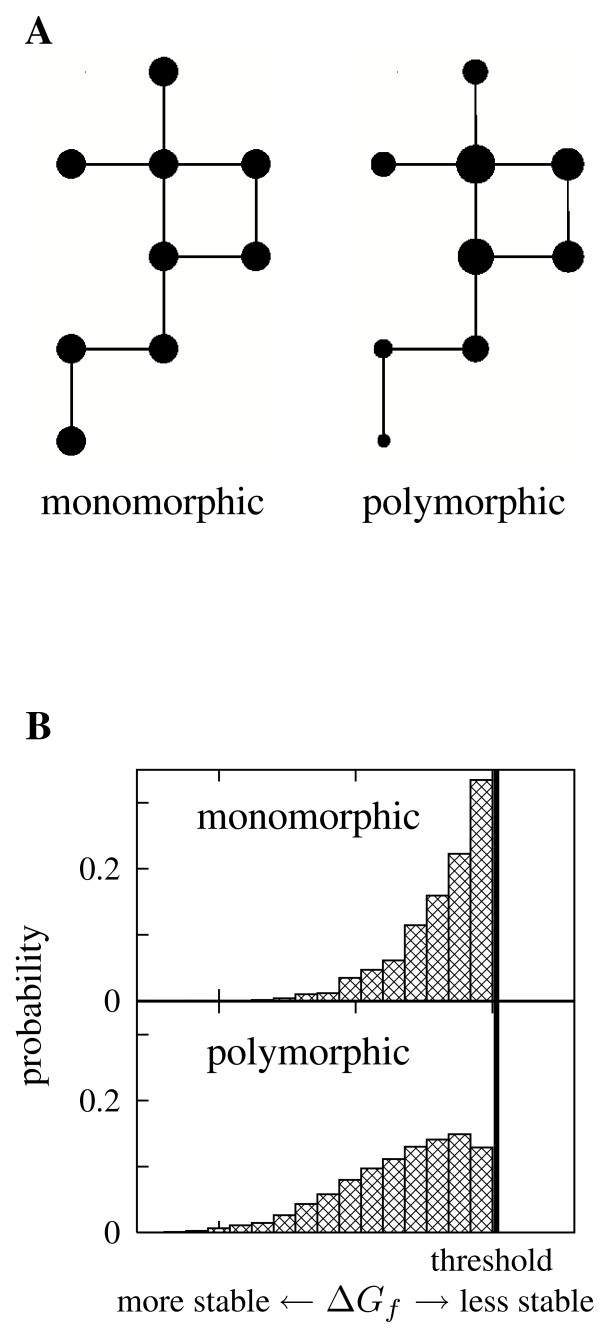Figure 1.
Theoretical views of the evolution of protein mutational robustness and stability. (A) Theory predicts that a mostly monomorphic population is equally likely to occupy any node of its neutral network, while a highly polymorphic population will prefer more connected nodes [11]. Node sizes are drawn proportional to the occupation probabilities. (B) Proteins evolving in a highly polymorphic population are predicted to be more stable than their counterparts in a mostly monomorphic population [22]. The histograms illustrate the distributions of stabilities for the two cases. The increased stability is a biophysical manifestation of excess mutational robustness, as more stable proteins are more mutationally robust [3-5].

